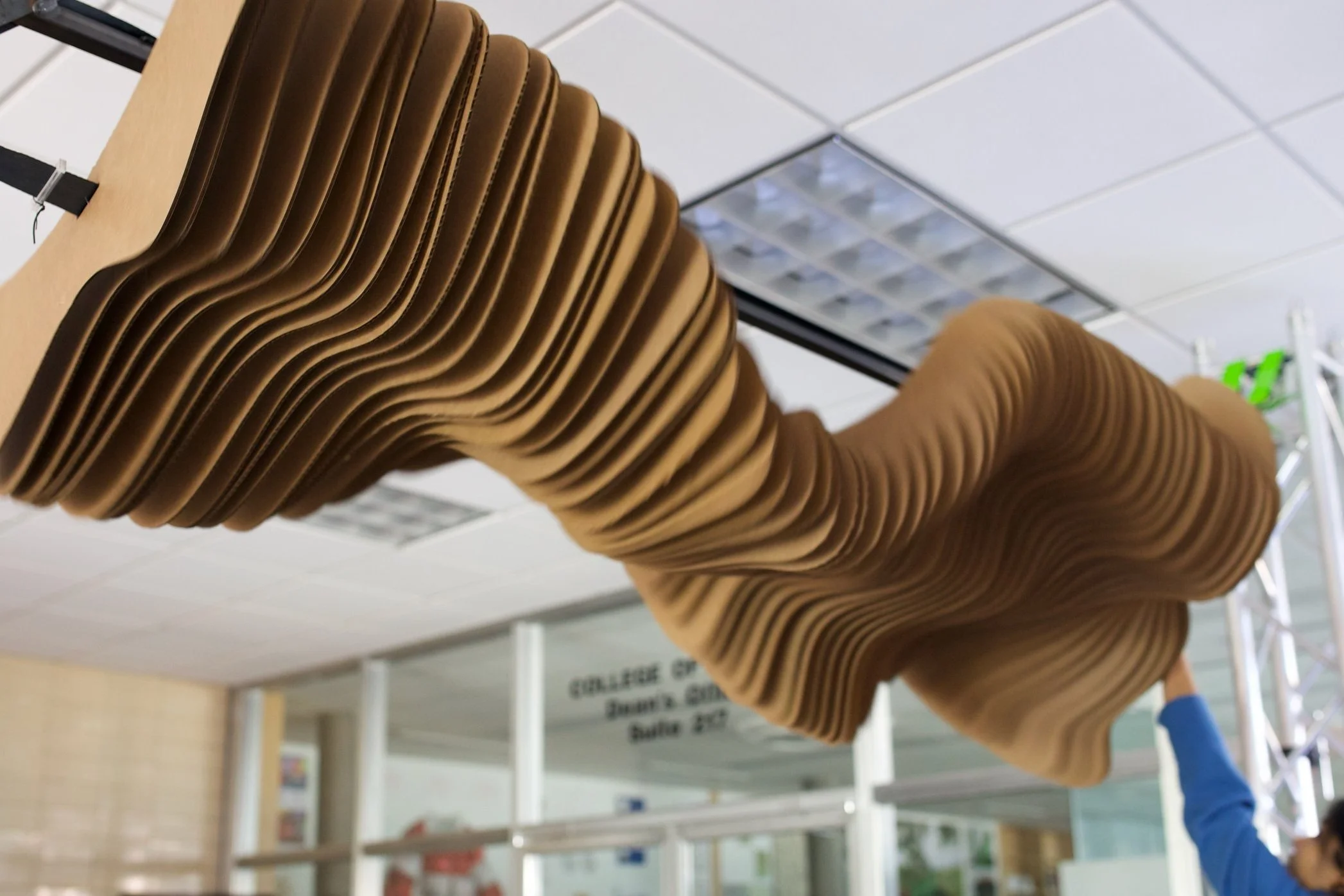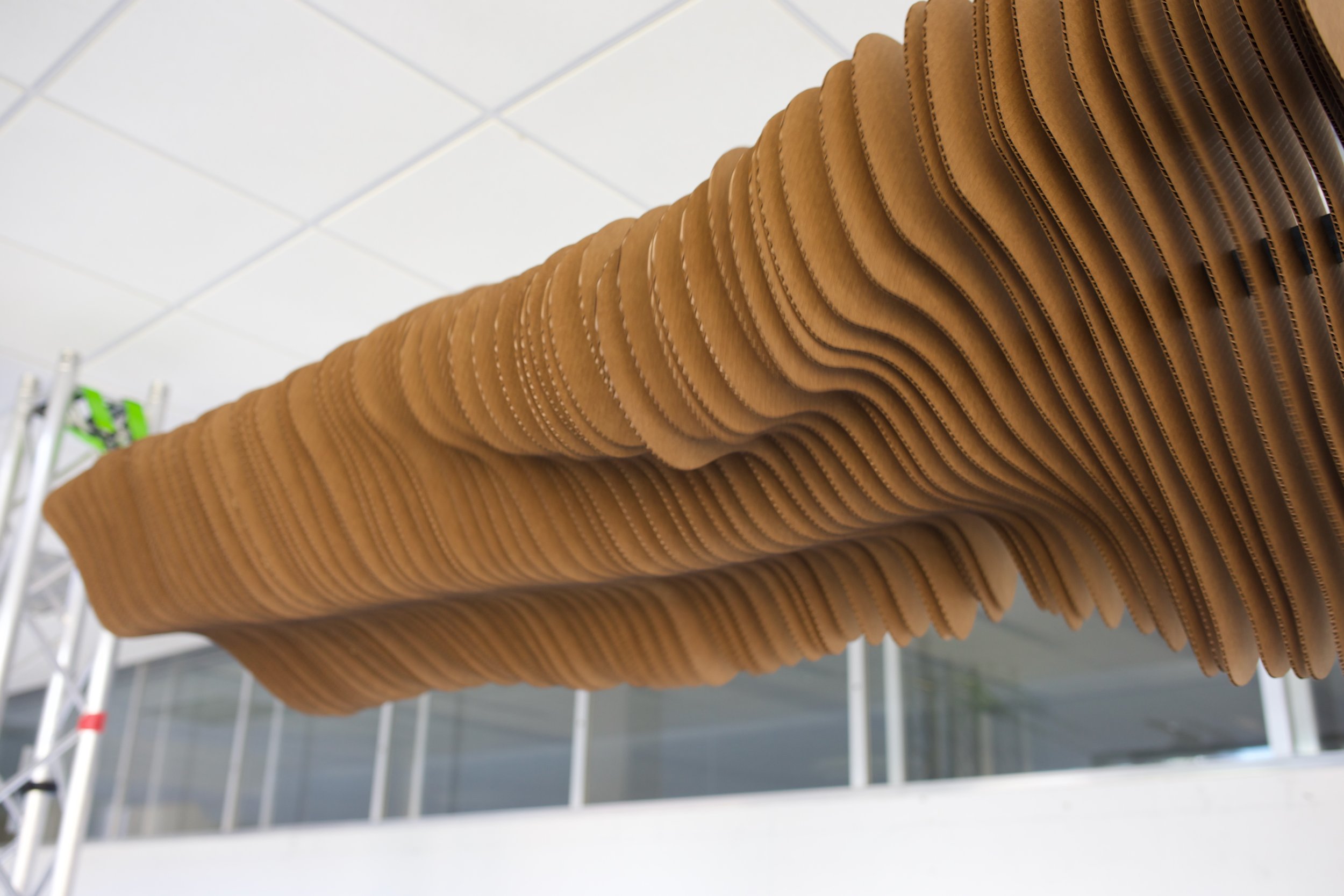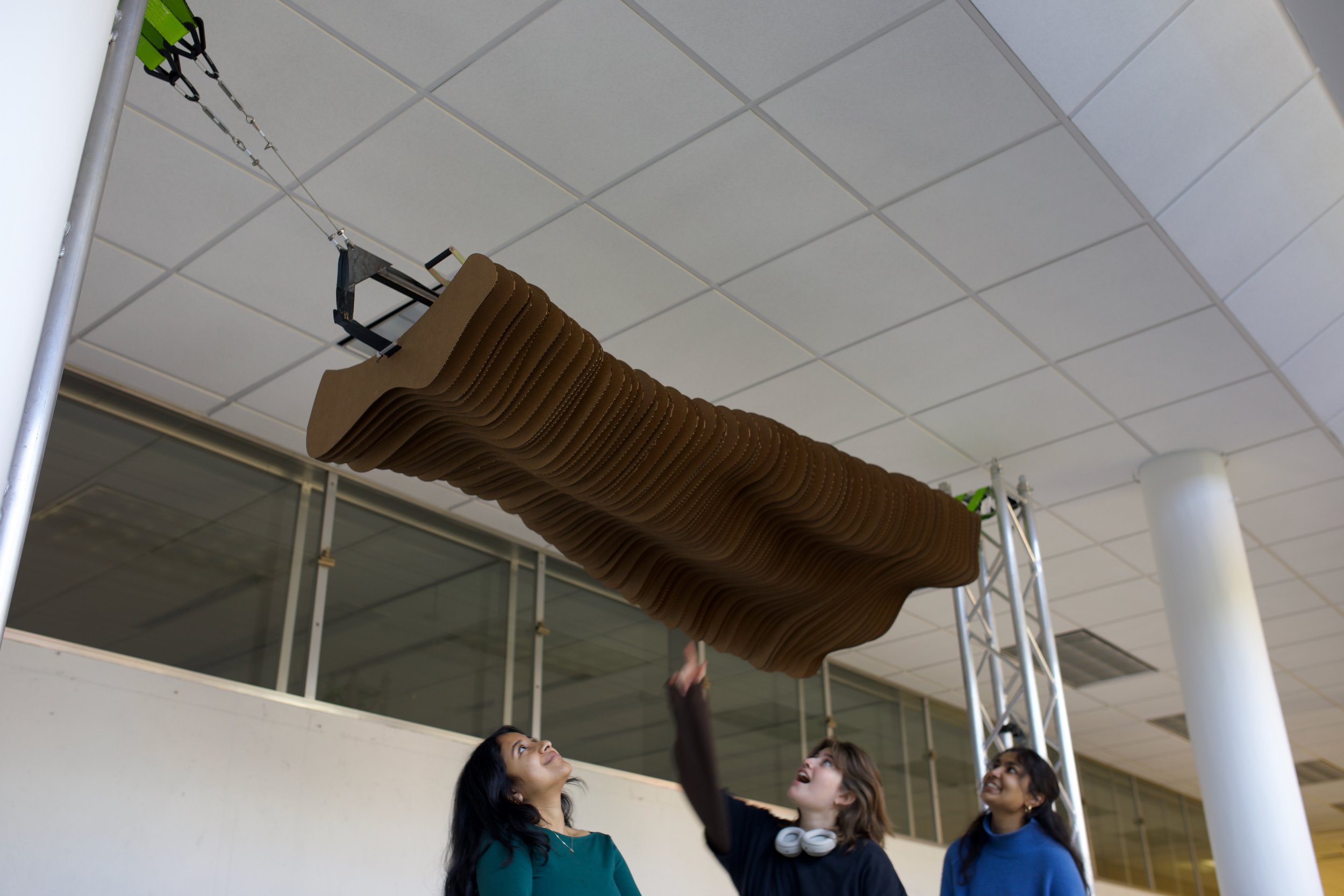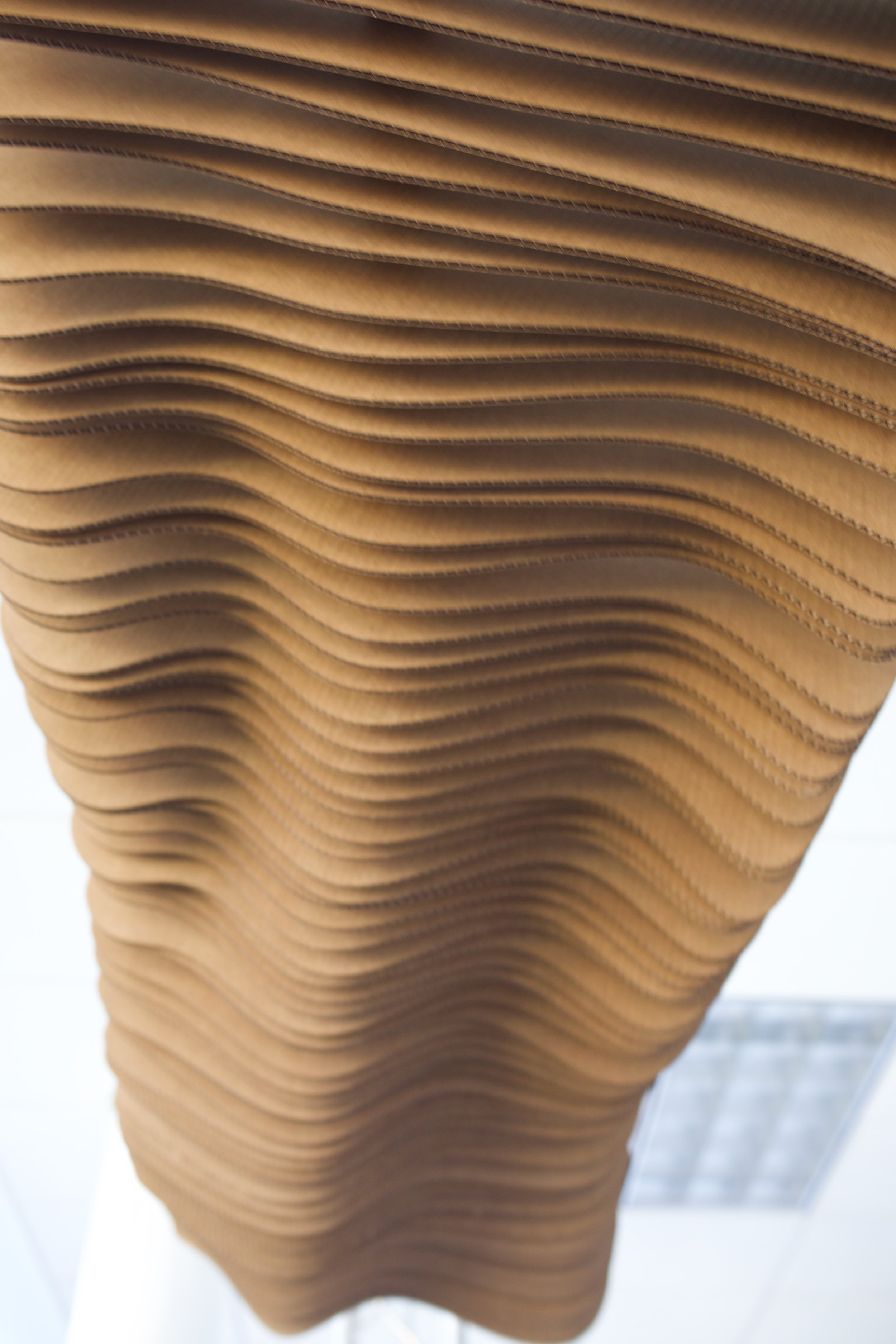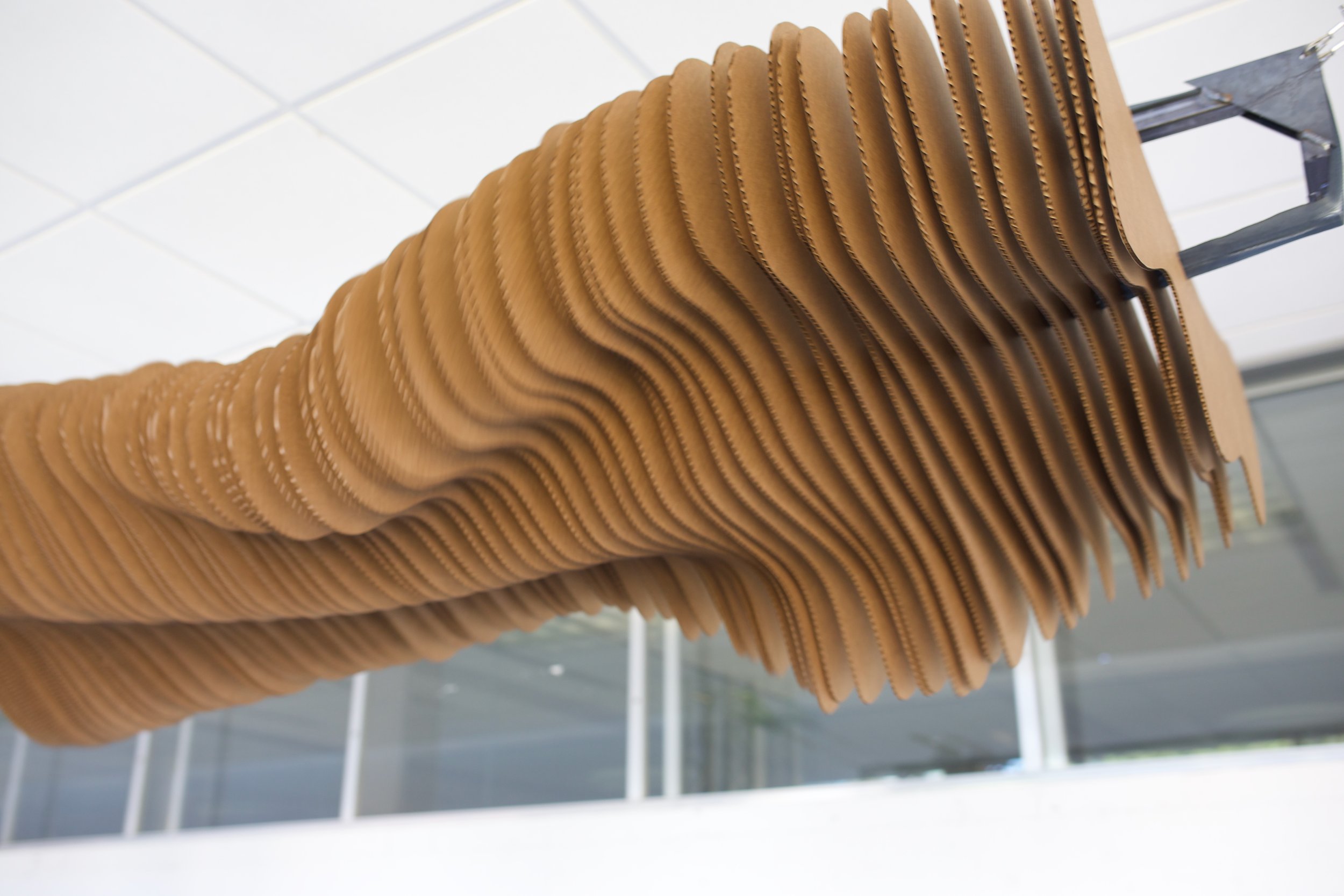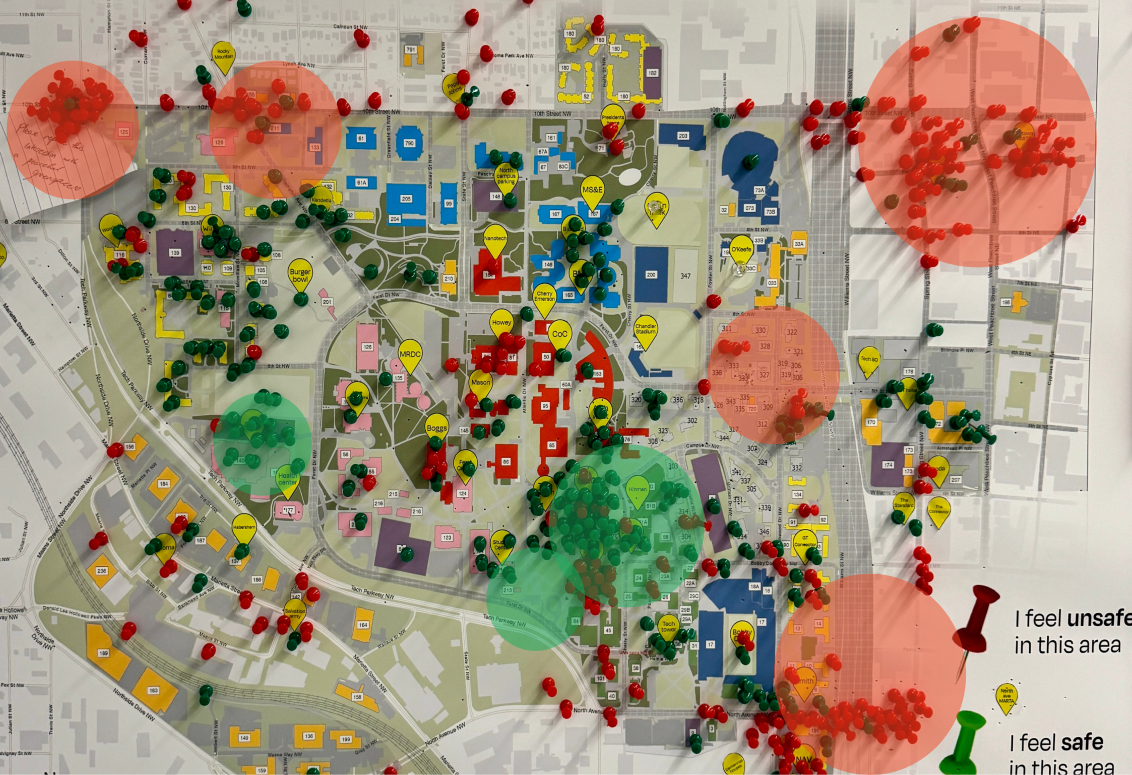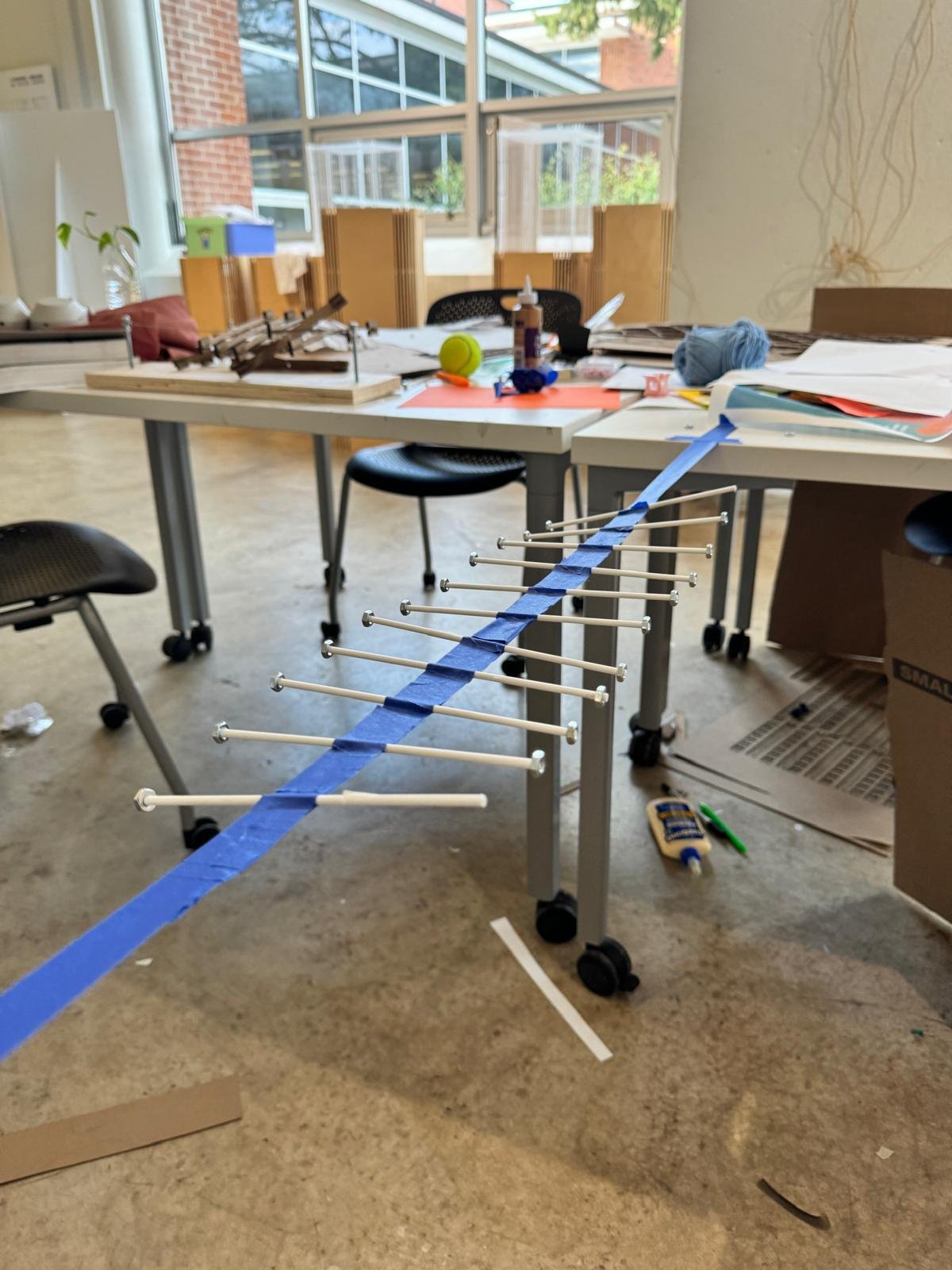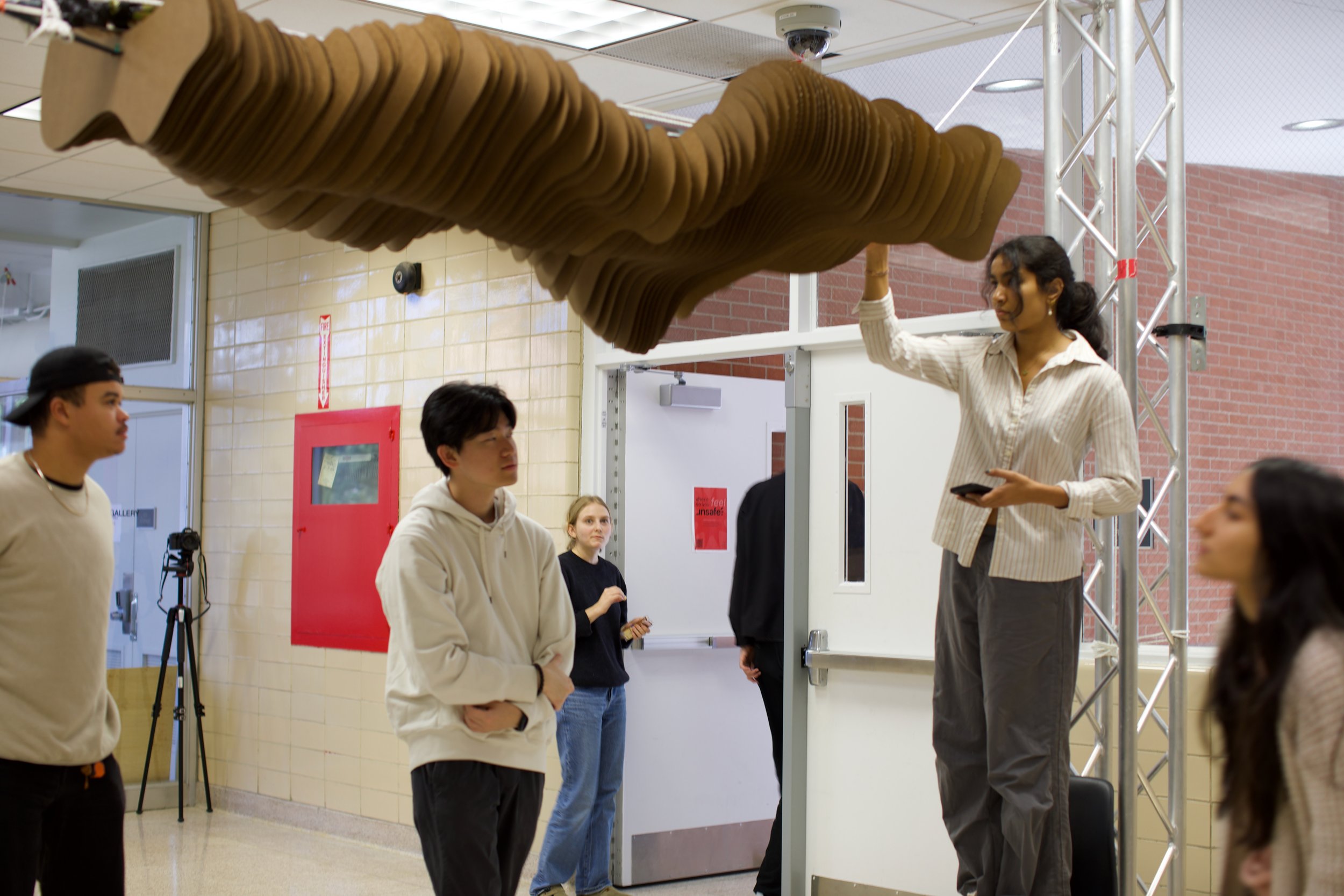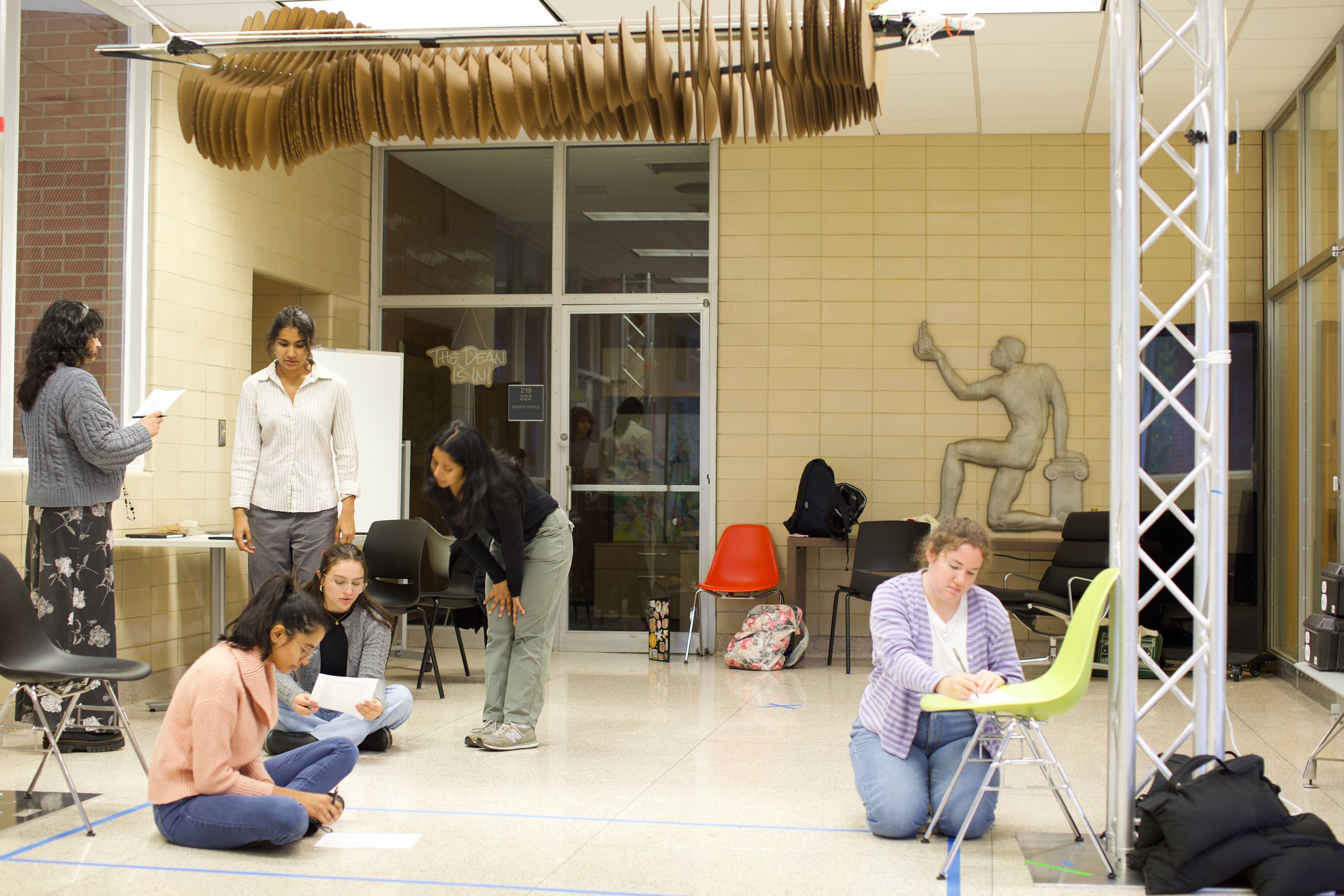*Published in the 2025 ACM/IEEE International Conference on Human-Robot Interaction under Student Design Challenge
*Published in the 2025 ACM/IEEE International Conference on Human-Robot Interaction under Student Design Challenge
CANOPY
Canopy is a design installation that spans heavily trafficked areas on college campuses and creates soothing ripple-like movements that initiate once a person enters the space.
Our project aims to create a more restorative campus environment that reduces mental stress and benefits emotional well-being. The integration of nature inspired movements and forms with robotics creates an interactive experience that transforms unpleasant environments into more calming spaces.
Timeline
15 Weeks
Team
Inika Shah, Jyotsna Bhageria, Priscilla Rojas
Skills
Arduino, CAD, C++, Laser Cutting, Slicer
Read our Research Paper here!
Inika Shah, Jyotsna Bhageria, and Priscilla Rojas. 2025. Canopy -- Restoring Campus Environments. In Proceedings of the 2025 ACM/IEEE International Conference on Human-Robot Interaction (HRI '25). IEEE Press, 1945–1948.
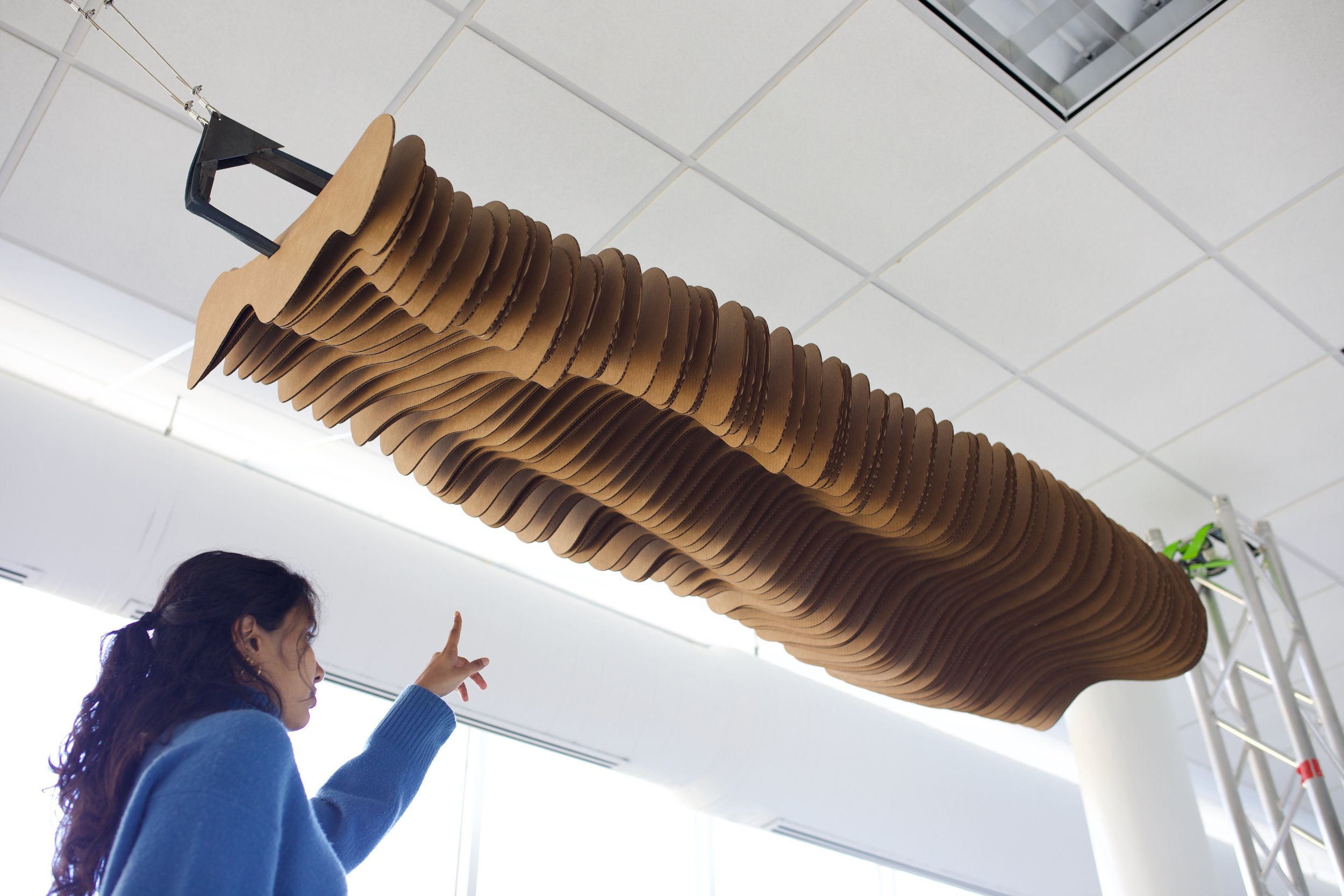
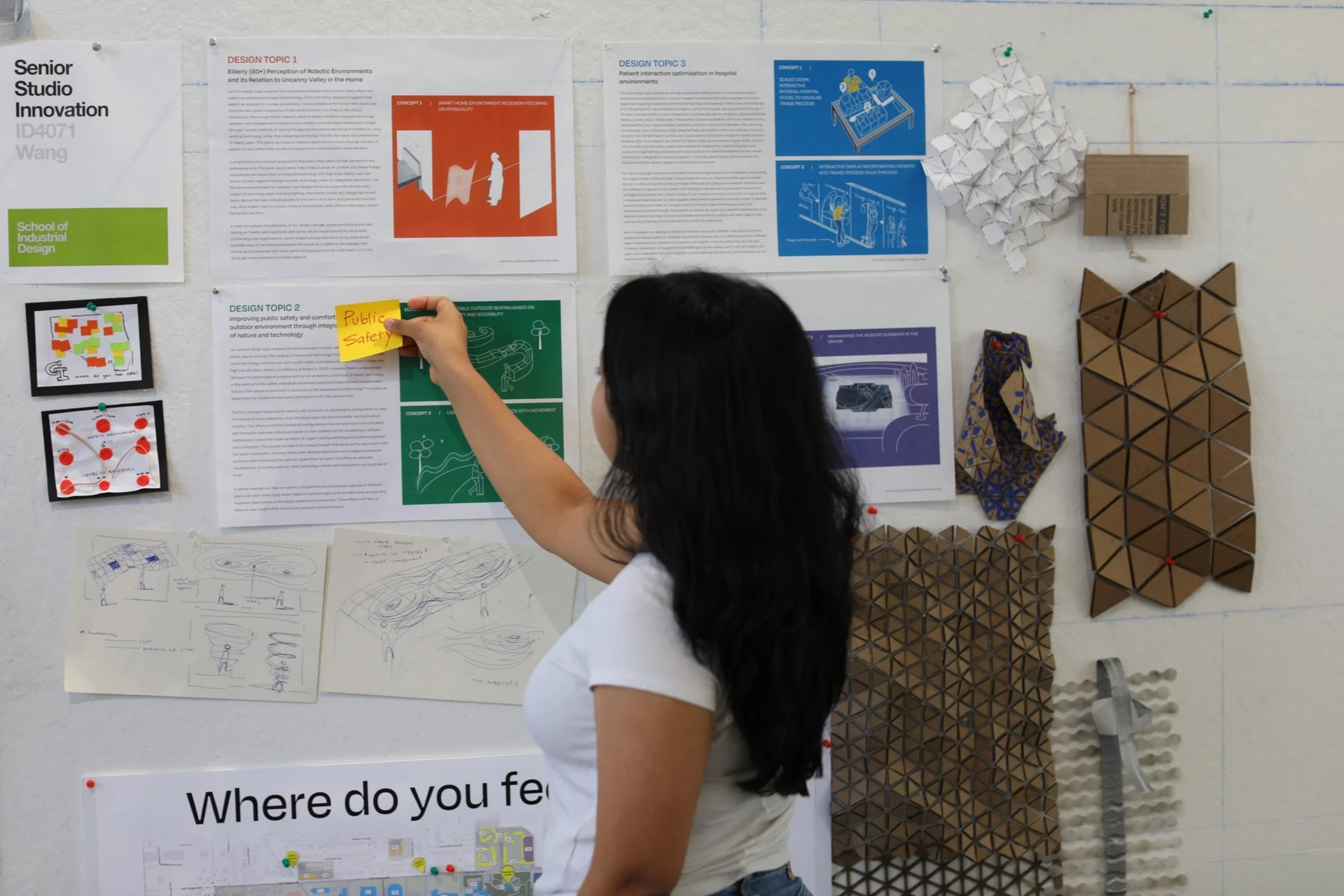
Dive into our Process
*
Dive into our Process *
Understanding campus safety perceptions among georgia tech students
Our research probe invited students to anonymously pin locations on campus where they felt safe or unsafe. Over the course of a week, we gathered 407 data points from two high-traffic campus areas, revealing seven key hotspots of perceived safety and discomfort.
Survey Findings
We cross-referenced the hotspots with survey responses about environmental factors that individuals associated with safe and unsafe spaces such as lighting, visibility, and foot traffic.
The findings highlight key attributes regarding the safety of these locations informing our design path by addressing negative features and enhancing positive ones.
Unsafe Environments
Characteristics of hostile environments included low lighting levels, narrow passageways, and a lack of people. 80% of respondents felt unsafe due to lack of people nearby, while 77% attributed feeling unsafe to poorly lit areas.
Safe Environments
In contrast, safe environments featured clear sight lines and good visibility. The presence of nature further enhanced the sense of safety.

How can natural forms and movements be abstracted and reinterpreted in an interactive installation?
Nature has the power to create calm and soothing environments. Research has shown that such symbolic representations of nature can trigger the same parasympathetic responses as direct interactions, positively impacting cognitive functioning and reducing stress.
Interpreting Wave Motions
The foundational concept behind our design is the application of mechanical transverse waves that cascade down a fixed line. This produces a ripple-like motion that users found both mesmerizing and calming.
One of our first prototypes featured popsicle sticks spaced along tape stretched between two tables. Adjusting the table distance changed the tape’s tension, which we found directly affected the movement.
Scaling up the Form
Early feedback suggested scaling up the model and viewing it from below, since the final installation would be ceiling-mounted and seen from underneath.
In the scaled-up model, heavier dowels and lower tape tension caused exaggerated, unpredictable movement, which felt unsafe and clashed with our calming intent. The spacing between dowels felt too skeletal, so we decided to explore more 3D, organic forms.
Form Exploration
Our first natural form introduced curves to contrast the spikiness of our initial model. We laser cut the prototype from acrylic to experiment with opacity. The form felt more approachable but still lacked depth.
We transitioned from 2D to 3D to add dynamics, slicing a 3D wave into planes and laser cutting them. The clear acrylic didn’t emphasize the form’s volume, so we experimented with combining different materials. We also addressed the visibility of sharp edges on the top face in the next iteration.
Combining translucent mylar with a solid cardboard frame preserved depth and allowed light through, but users felt it looked too skeletal and the lightweight mylar made movement less impactful.
Users preferred the cardboard, as it created a cohesive yet lightweight volume that maintained the ripple movement. We decided to move forward with the cardboard but still had to scale up our model, and fine tune the form to be more balanced and determine our suspension method.
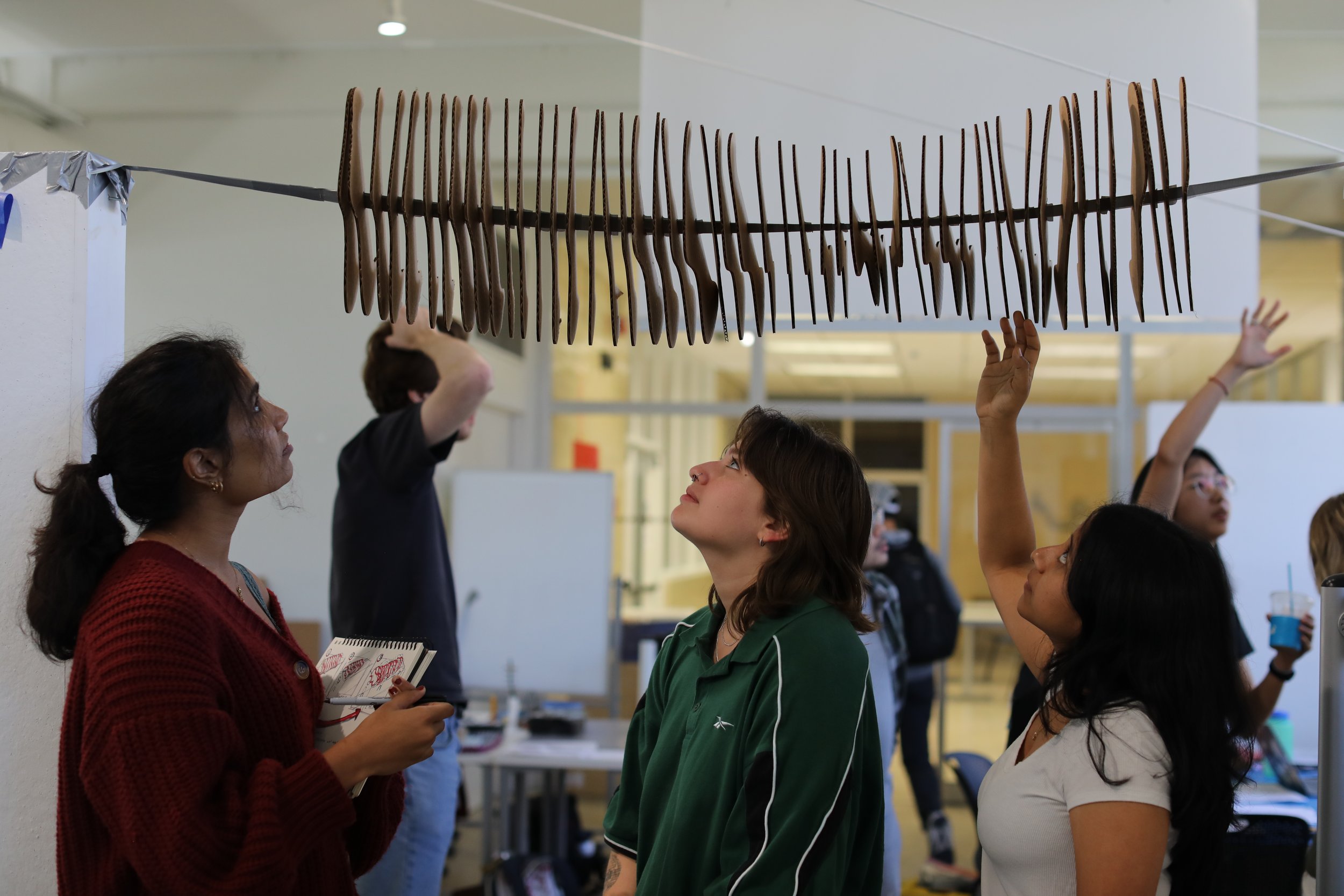
We discovered that viewing the structure from outside was more impactful than expected.
Initial user testing showed that many found this perspective more captivating than viewing from underneath, prompting us to explore how different viewing angles influenced the installation’s emotional and restorative impact.
Constructing the Final Installation
Balancing between metal trusses
Suspended structure above head height across two metal beams
Allowed for easy viewing
Beams obstructed the path, preventing corridor simulation
L beam structure
L beam blocked ratchet strap from reaching full tension, causing panels to shift inward
Switched to rope suspension for manual height adjustment and better viewing angle
Final suspension mechanism
Welded offset allowed cardboard to rotate while staying secure
Turnbuckles added for fine balance adjustments
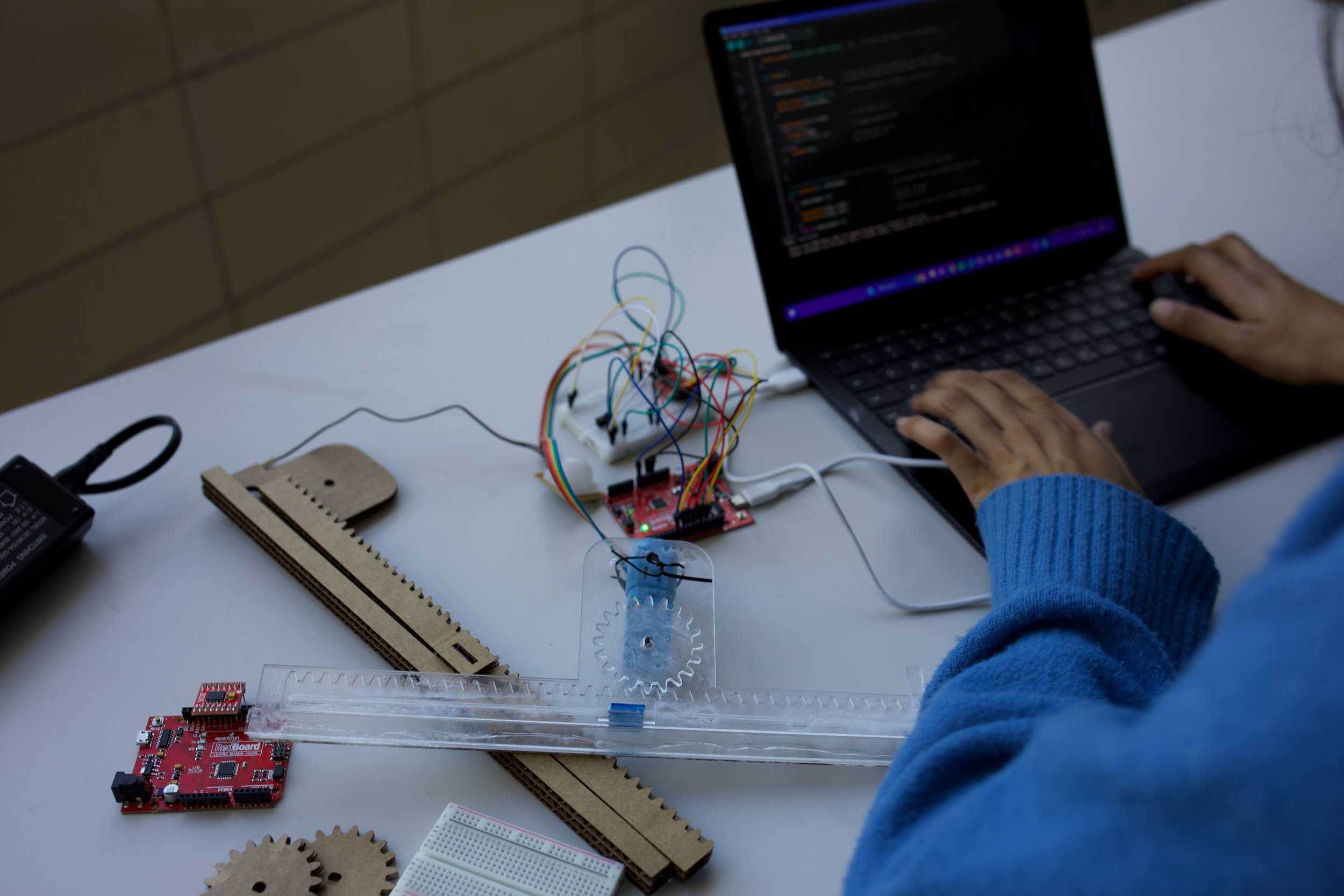
Motorizing three distinct movements.
We used motors controlled by Arduino to trigger Canopy’s ripple effect, mimicking three distinct motion types: subtle and frequent, bold and infrequent, and bold and frequent.
Bold and Frequent
High frequency, low amplitude
Subtle and Frequent
High frequency, low amplitude
Bold and Infrequent
Low frequency, high amplitude
*User Testing and Implications
*User Testing and Implications
User testing assessed Canopy’s perceived restorativeness from different viewing positions.
User Testing Session
Participants explored Canopy from inside and outside the bounding box as we manually varied the wave motion every 30 seconds using a Wizard of Oz method.
Perceived Restorativeness Survey
Participants completed the Perceived Restorativeness Scale twice, once for each viewing position, to measure emotional and restorative responses.
Qualitative Follow-up Interview
Participants answered qualitative questions about their experience, including preferred viewing angle, motion type, and emotional impact, revealing personal preferences and biases.
Key Findings
Amplitude and Frequency are inversely proportional.
Both subtle, frequent ripples and bold, infrequent waves can evoke feelings of calmness and serenity.
Environment Influences Initial Perception.
The installation feels predictable being placed in a studio setting, since installations and prototypes are more common, while it would be more unexpected in alternative environments like a library or outdoors.
Height Influences Viewing Preferences
Taller users preferred subtle movement underneath to avoid feeling too close to the structure. While many appreciated the intimate experience, they emphasized the need for enough clearance to avoid a sense of danger
Introducing Canopy
After 15 weeks of research, ideation, prototyping, and coding, our interactive installation Canopy brought our exploration of the intersection between HRI and design to life.
Our work was selected in the Student Design Challenge Category of the 2025 ACM/IEEE International Conference on Human-Robot Interaction and published in the corresponding ACM Digital Library.
